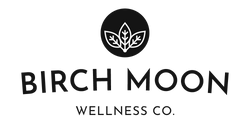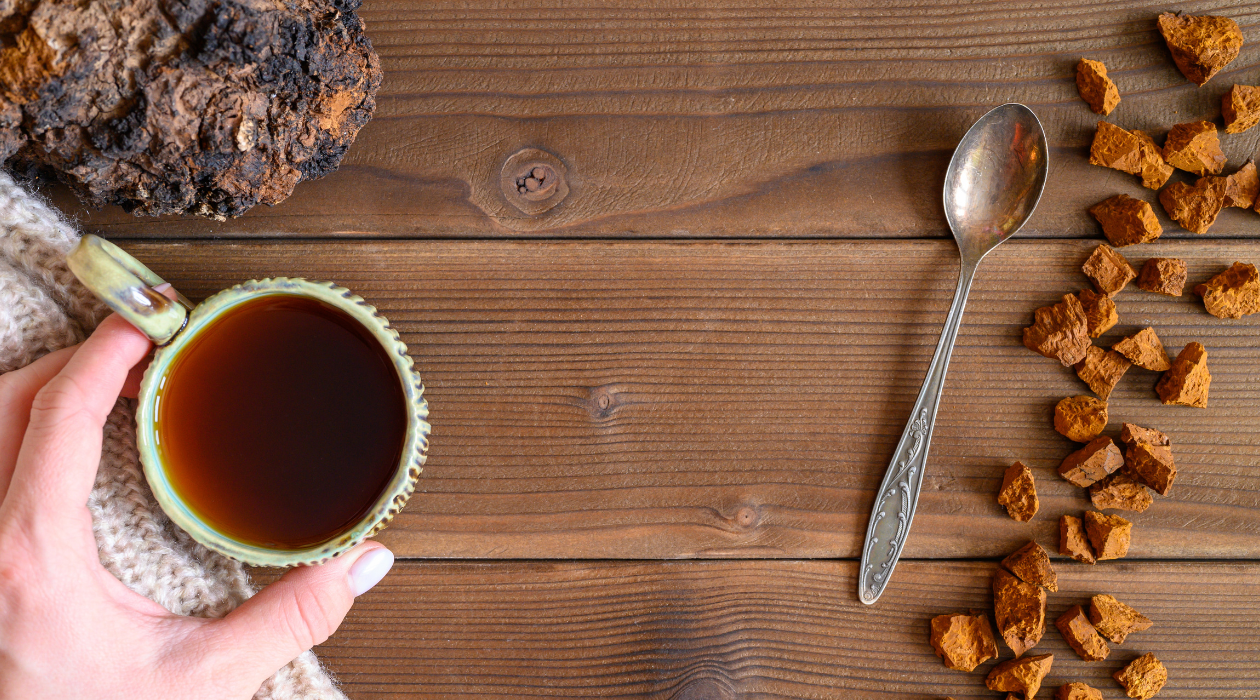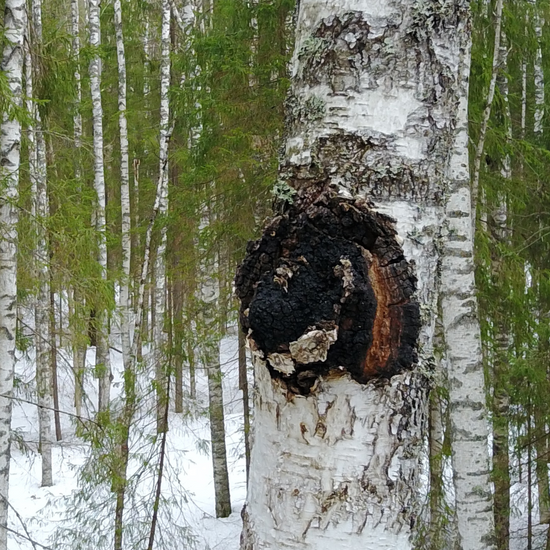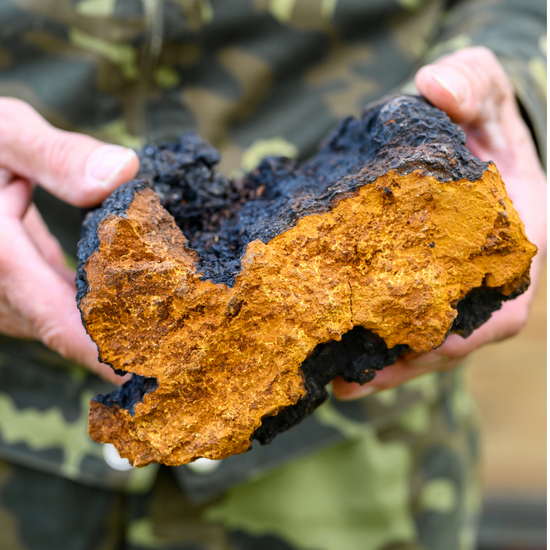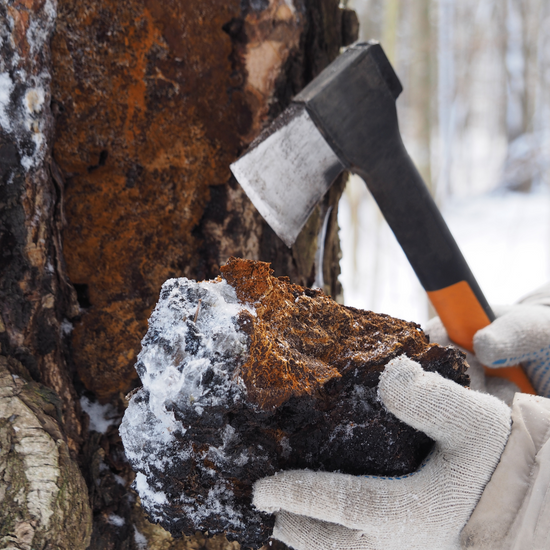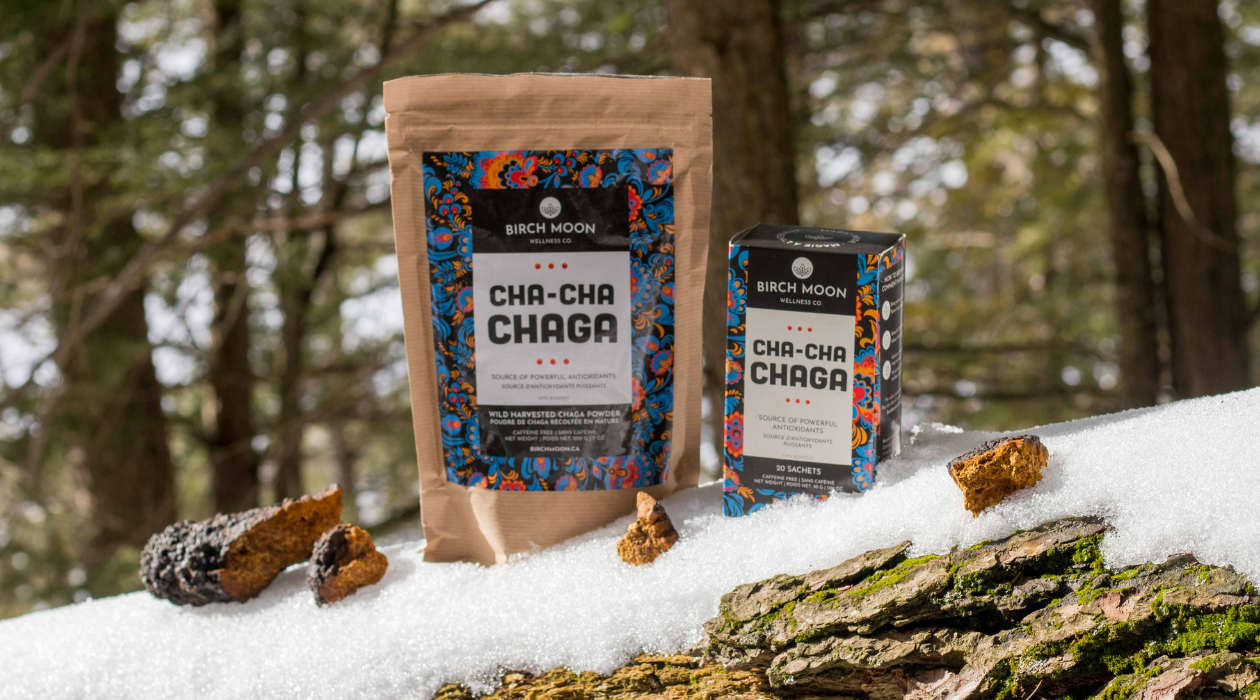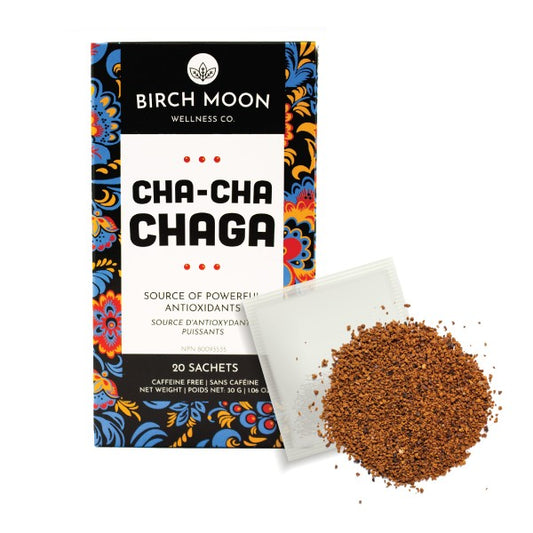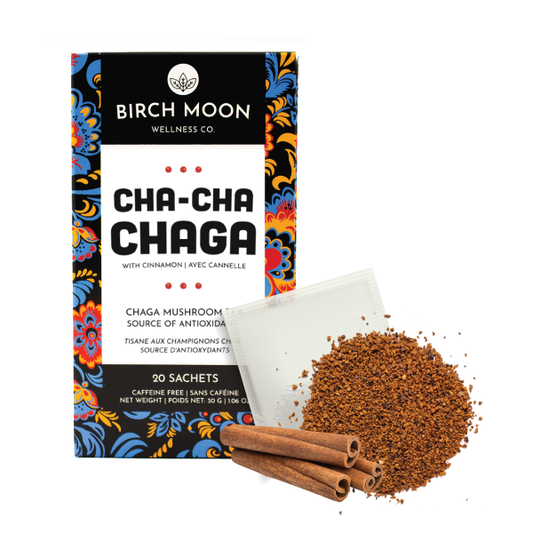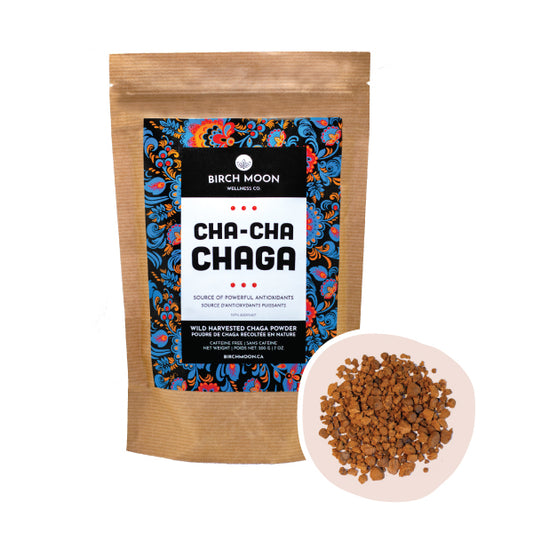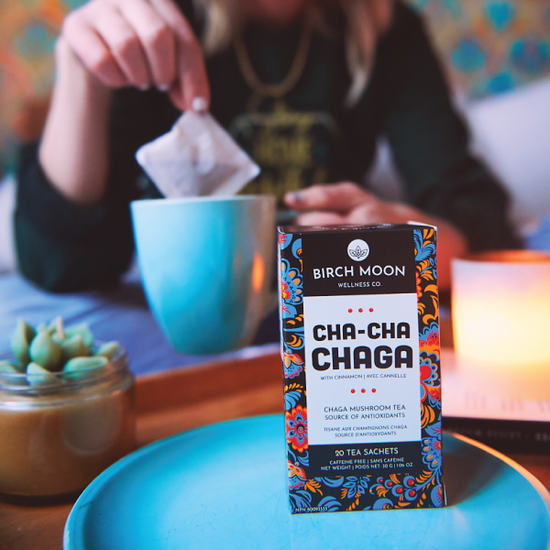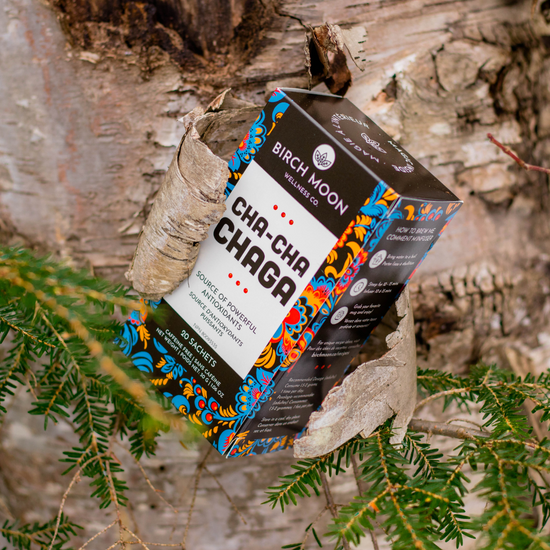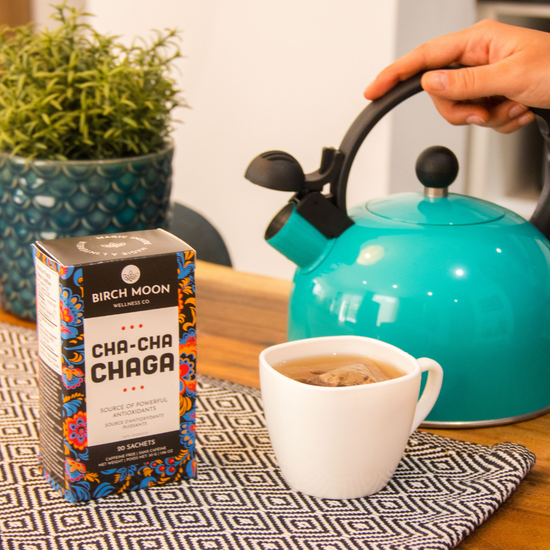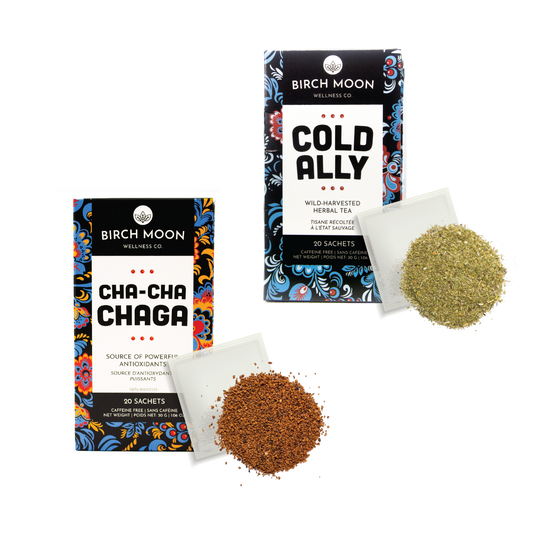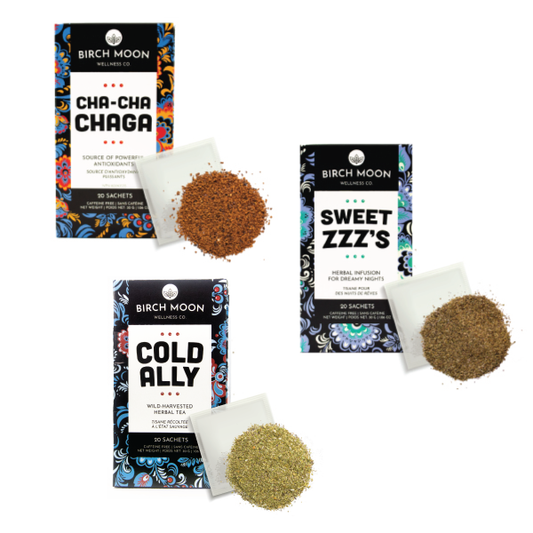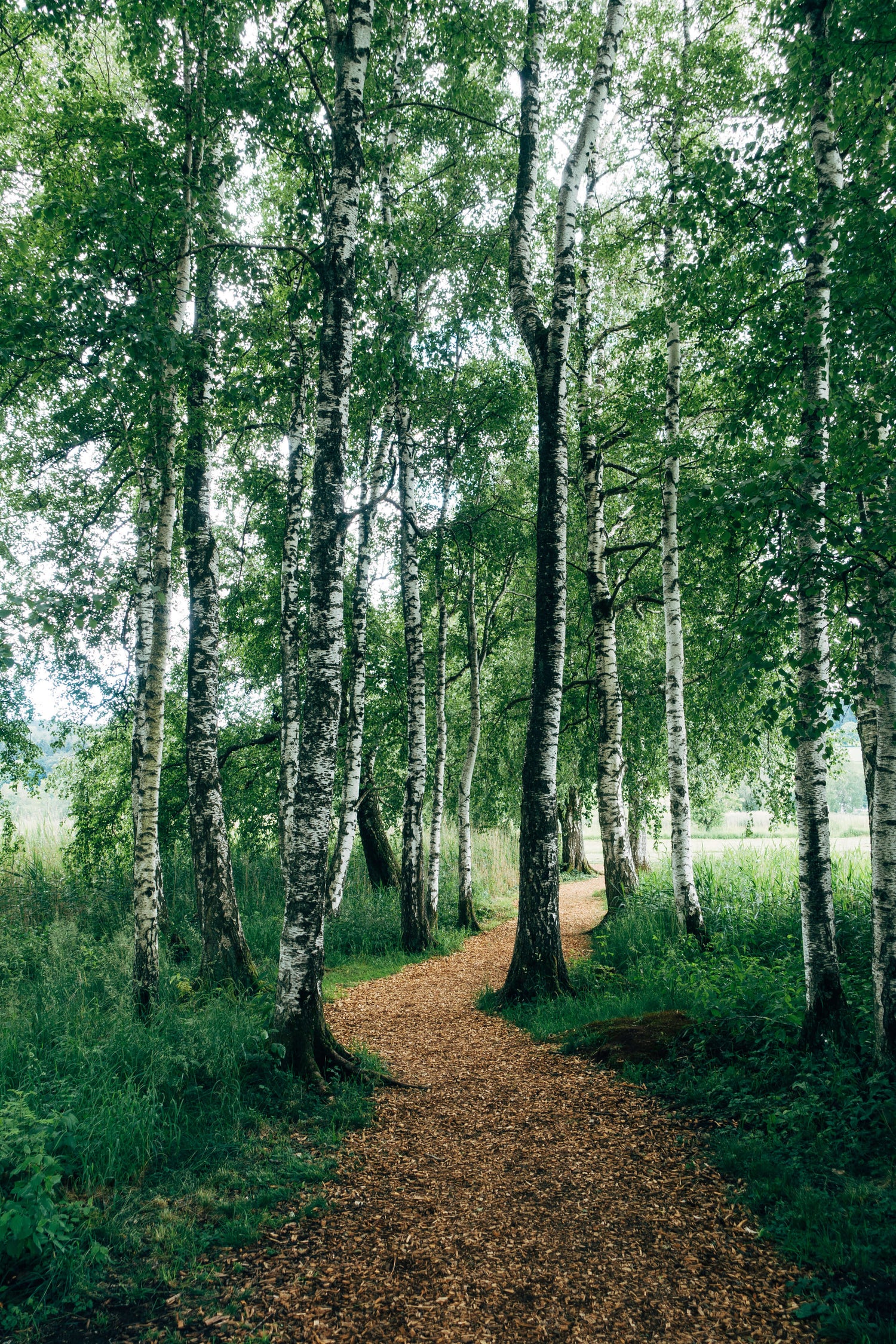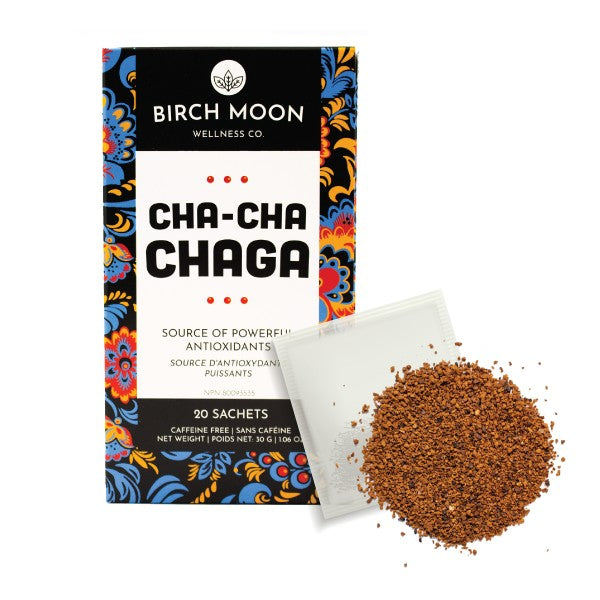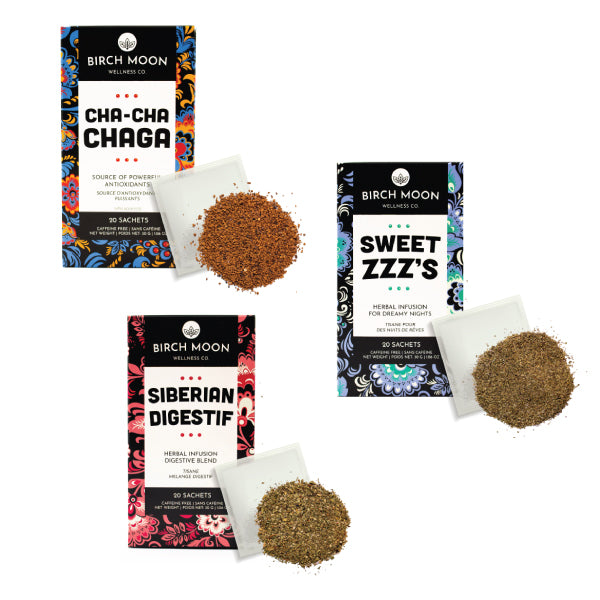What is chaga mushroom?
Chaga is a medicinal mushroom that grows on birch trees in northern climates such as areas of Russia, Europe, China and North America. For centuries people have been using chaga mushroom for its healing properties and prevention of disease. In Russia, the use of chaga dates back to ancient times and was used in traditional folk medicine.
Siberian chaga is considered to be one of the highest quality mushrooms due to the region's biodiversity and abundance of wild birch tree forests.
-
How does chaga grow?
Chaga (or Inonotus obliquus) grows on birch trees. It starts off as a funny looking birch bark and after growing for 10-20 years turns into a hard, wood-like brown golden mass. Biologically speaking, chaga is a parasite and will eventually poison the tree to death. This process is what allows chaga to get all of its nutrients and benefits.
-
Where and when to find chaga?
Chaga mushroom grows in colder climates in northern parts of the world. Since many of the world's birches are in Russia, Siberia is especially known for its abundance of quality wild chaga. You can even sometimes find chaga in local forests and national parks of Canadian and northern states. Chaga is best to be harvested during fall season as this is when it reaches its peak in nutrients. However many opt in for winter harvest since it's much easier to spot chaga on the trees with the lack of leaves.
-
How to consume chaga mushroom?
There are many ways of consuming chaga – for centuries tea has been one of the popular methods. Today, you can get raw chaga as chunks or powder to brew tea with. Other methods include chaga extract, which requires a special extraction process, and can be found in a form of drops or powder.
From tree to tea
Chaga tea has been consumed by northern cultures worldwide for centuries – preparing and brewing chaga requires patience, precision and tender love. These wild-harvesting methods were passed down generations and practiced by ethical foragers to this day.
-

Chaga grows on birch trees, usually shaped like a cone with crusty edges.
-
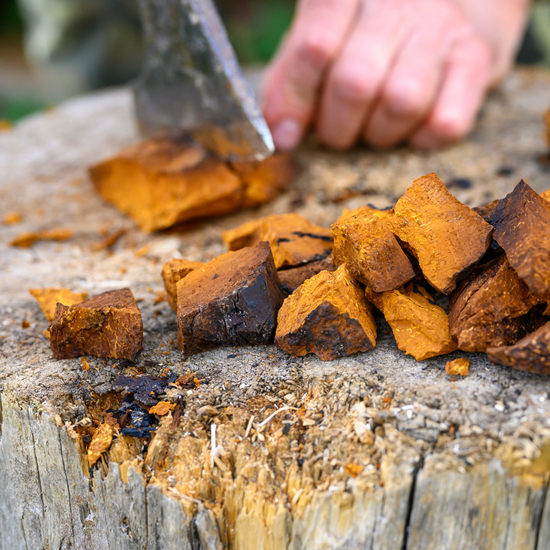
Right timing and proper method are key when harvesting chaga safely.
-
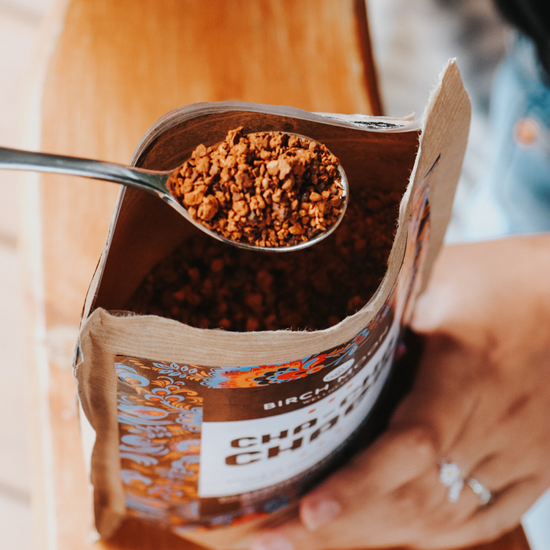
Chaga is then broken into smaller chunks & dried to be brewed as tea.
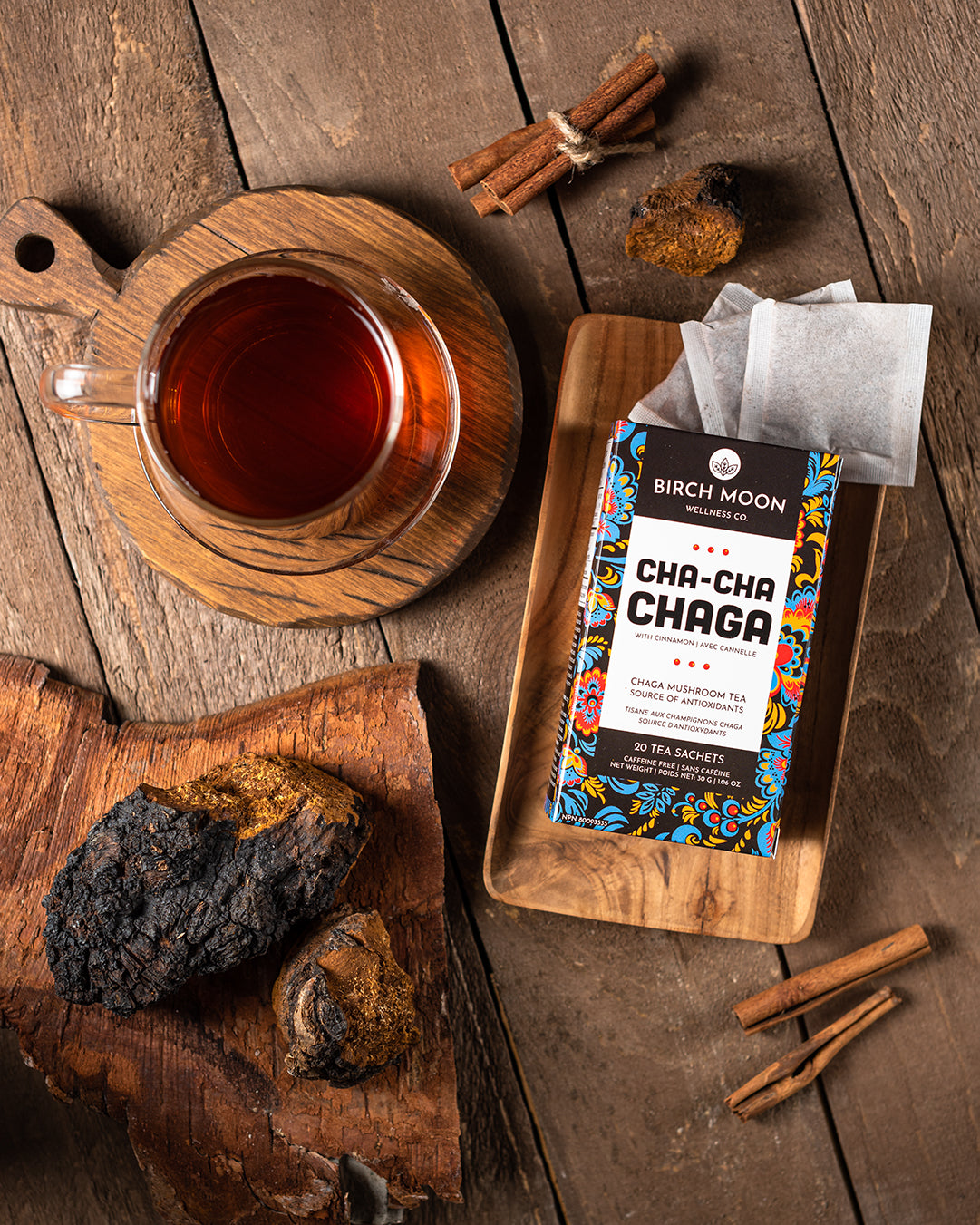
How to consume chaga?
There are many ways of consuming chaga – for centuries tea has been one of the popular methods. Today, you can get raw chaga as chunks or powder to brew tea with. Other methods include chaga extract, which requires a special extraction process, and can be found in a form of drops or powder.
Healing benefits of chaga

High Antioxidant Potency
The Sclerotium (outside part of chaga) contains pigment called melanin that is known for its high antioxidant levels. According to the ORAC, a score that measures antioxidant potency, chaga tops the chart and outranks acai and goji berries by more than a threefold.
Nutrient-Dense Superfood
Chaga is super rich in different nutrients and minerals, including amino acids, fiber, iron, zinc, calcium, vitamin D & B complex and more.
Anti-Inflammatory Adaptogen
Chaga is known for its anti-inflammatory effects that are shown to support and protect a healthy digestive system, help the body absorb more nutrients and improve liver function.
Natural Immune Booster
Foods rich in antioxidants are generally known for their immune system support and boosting benefits.
Regulates Blood Pressure
Antioxidants found in chaga can have a role in regulating blood pressure and supporting cardiovascular health.
Natural Stress Relief
As an adaptogen, chaga helps enhance a human's body ability to naturally respond to different kinds of stresses (physical, mental and emotional).
Try Birch Moon Chaga Tea Today
Supercharge your day with a rich dose of antioxidants. Our Cha-Cha Chaga medicinal mushroom tea is made with 100% wild-harvested Siberian chaga. This tea is caffeine-free, comes with zero added sugars and no artificial or natural flavourings and is consciously harvested with yours and the planet's health in mind.
-
Cha-Cha Chaga Tea – Chaga Mushroom Tea
Regular price $18.00 CADRegular priceUnit price per -
Cha-Cha Chaga Tea with Cinnamon – Chaga Mushroom Tea
Regular price $17.00 CADRegular priceUnit price per -
Cha-Cha Chaga Loose Tea Powder – Chaga Mushroom Tea
Regular price $28.00 CADRegular priceUnit price per -
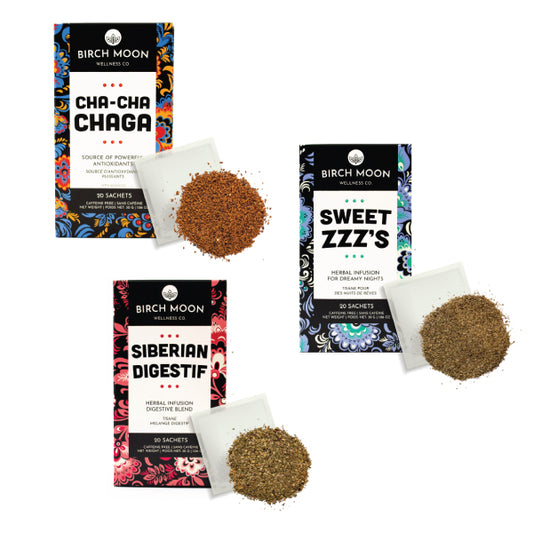 Sold out
Sold outWellness Trio – Discovery Tea Bundle
Regular price $37.00 CADRegular priceUnit price per$43.00 CADSale price $37.00 CADSold out
Common questions about chaga

What does chaga tea taste like?
Being a fungi, chaga does not taste anything like mushrooms! Chaga has a very unique earthy taste with a hint of vanilla aroma. Many describe it very similar to earl grey or english breakfast tea.
How to make chaga tea?
Making chaga tea is very simple. All you need is hot water and finely grounded chaga. It’s important not to burn it, so don't use boiling water! The steeping process takes 10-15 min. Proper brew time is key as it allows chaga to extract its best nutrients.
Can you drink chaga cold?
Yes, of course! Make sure to first prepare hot tea to extract all the goodies and than just cool it in the fridge.
What else you can do with chaga?
So many things! You can make add different flavours to your tea from lemon and ginger to maple syrup or honey, create chaga tea lattes and even make hot chocolate with it. If you're using chaga extract powder, you can add it as a dietary supplement to coffee, smoothies and other meals.
What others are saying
Tea with Jann – Birch Moon Teas Review

Wellness Trio – Discovery Tea Bundle
Discover chaga tea with our bundles
-
 Sold out
Sold outWellness Trio – Discovery Tea Bundle
Regular price $37.00 CADRegular priceUnit price per$43.00 CADSale price $37.00 CADSold out -
 Sold out
Sold outHoliday Tea Gift Bundle
Regular price $35.00 CADRegular priceUnit price per -
Immunitea Duo – Winter Wellness Bundle
Regular price $26.00 CADRegular priceUnit price per$31.00 CADSale price $26.00 CADSold out -
Immunitea Trio – Winter Wellness Bundle
Regular price $37.00 CADRegular priceUnit price per$43.00 CADSale price $37.00 CADSold out
